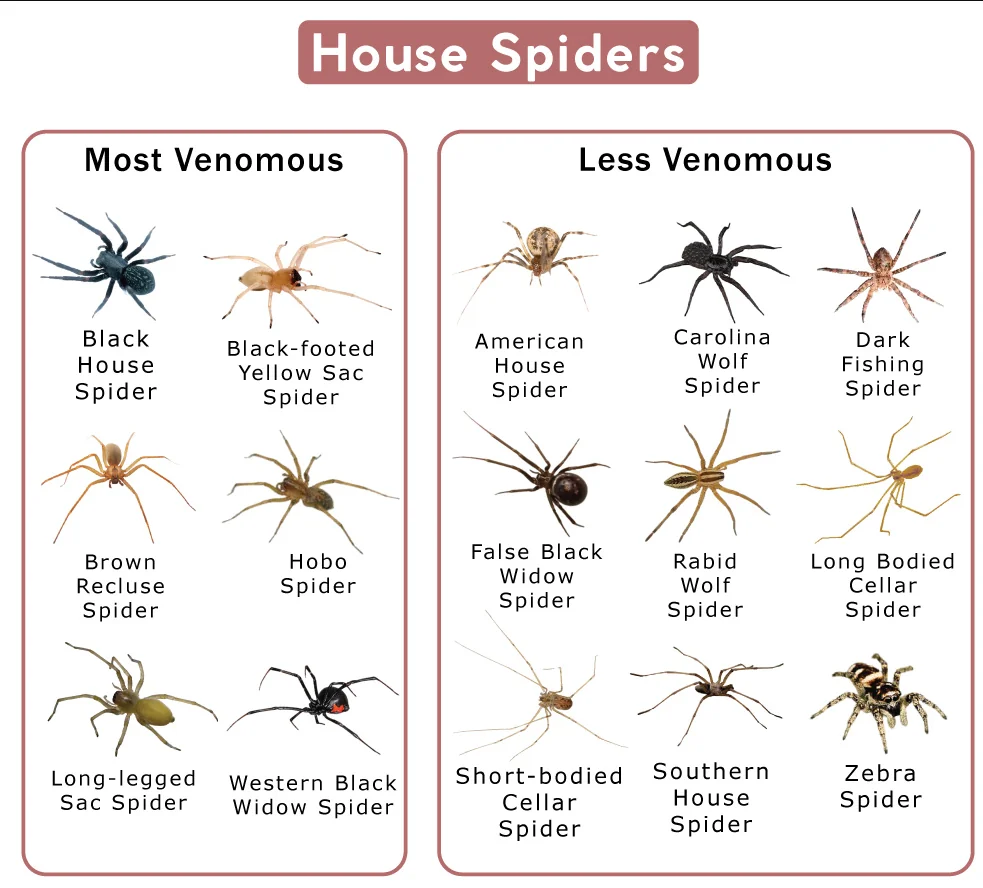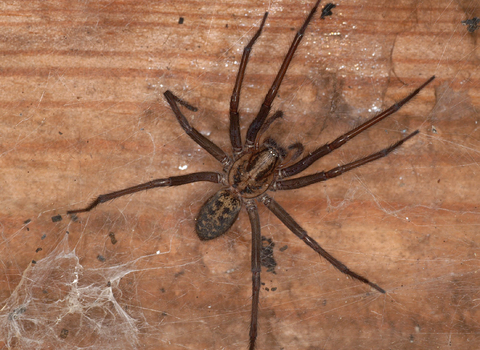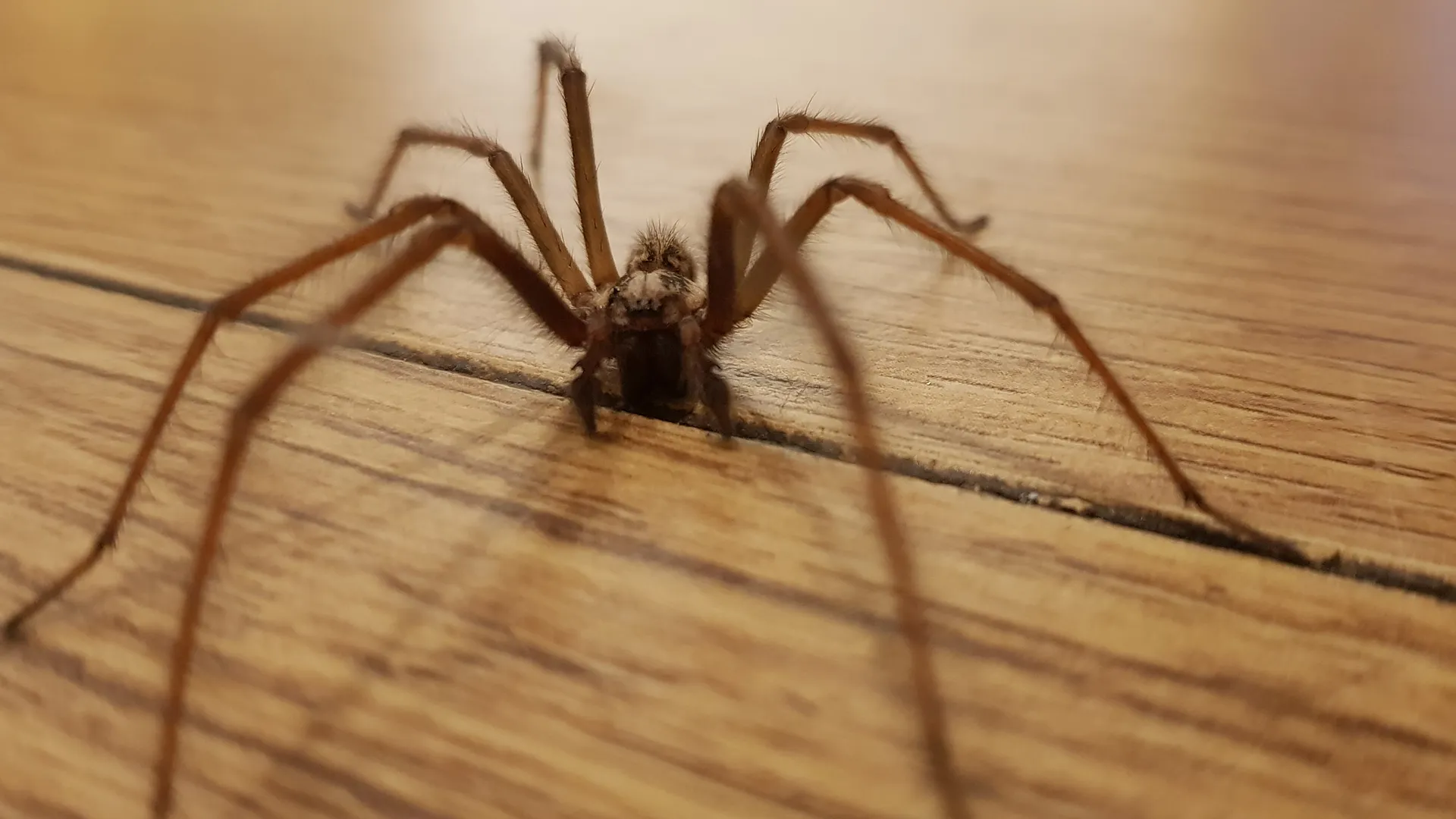Spider Treatments in Florida
Exterminator Services for Hialeah, Hollywood, Opa Locka, Hallandale, Dania, and Pembroke Pines
Florida’s subtropical climate—consistently warm, often humid, and rarely subjected to harsh cold—presents ideal conditions for spiders to remain active and breed year-round. In busy urban centers such as Hialeah and Hollywood or rapidly developing communities like Opa Locka, Hallandale, Dania, and Pembroke Pines, these eight-legged pests can move indoors or build webs in outdoor corners if not promptly managed. This service page highlights why spiders thrive in Florida, how to spot an infestation, and why turning to a professional spider exterminator is key for thorough and lasting removal. By recognizing spider hideouts, assessing their prey sources, and deploying specific control strategies, property owners can maintain clean, web-free homes and businesses.
Why Spiders Flourish in Florida

1. Warm, Moist Environment
Spiders flourish in moderate-to-high temperatures and humidity levels, conditions that Florida routinely meets. Even slight winter cool snaps rarely last, letting spiders remain consistently active. Heated or air-conditioned interiors further support year-round breeding if insects—their primary food source—are also available indoors.
2. Abundant Insect Prey
Roaches, flies, mosquitoes, moths—Florida’s mild climate encourages robust insect populations. Spiders, being top invertebrate predators, flourish when prey abounds. Homes or commercial settings with frequent insect presence (due to bright lights, open doors, or incomplete sealing) attract spiders that seek easy meals.
3. Various Hiding Spots
From older buildings with cracks in baseboards to landscaped yards with dense shrubs, Florida’s architecture and vegetation offer countless spider harborage points. Garages, attics, or behind furniture provide refuge from foot traffic, while outside, webs under eaves or near porch lights catch insects passing through.
4. Minimal Seasonal Decline
Unlike colder states, Florida’s mild winters don’t slow spiders’ breeding or force them into long dormancy. They continuously lay egg sacs, leading to multiple overlapping generations if left unmanaged. Spotting a few webs or spiderlings can herald deeper infestations if not addressed.
Telltale Signs of a Spider Infestation
1. Multiple Webs Indoors
One or two webs might be coincidental, but noticing an uptick in corners, ceiling edges, or behind fixtures suggests a thriving spider population. These webs can vary from neat orb shapes to tangled cobwebs, depending on the species.
2. Egg Sacs or Clusters
Spiders often protect their eggs in small silk pouches, usually affixed to webs or hidden in crevices. Each sac can hold dozens—sometimes hundreds—of spider eggs, which can hatch into spiderlings that quickly spread throughout a room.
3. Frequent Spider Sightings
Catching sight of multiple spiders around windowsills, bathrooms, or near lights indicates that your property provides them enough food and shelter to remain visible beyond random encounters. If you see them daily, it may be a sign of an active, reproducing colony.
4. Accumulated Insect Remains
Spiders feed on insects, leaving fragments like wings or exoskeletons in or below webs. Discovering clusters of insect remains in corners or windows reveals areas where spiders hunt regularly, suggesting a consistent prey supply.
5. Musty or Off Odor
A large or long-standing spider infestation may produce a faint, musty odor due to amassed droppings, egg sacs, and other organic matter. Combined with visible webs or sightings, this smell reinforces the likelihood of a significant spider presence.
Risks of Ignoring Spiders
1. Ongoing Web Expansion
Spiders breed quickly under favorable conditions, spinning more webs in additional rooms or outdoor areas if left undisturbed. Over time, webs can accumulate on light fixtures, corners, or near air vents, hindering property cleanliness.
2. Anxiety and Discomfort
Some individuals experience considerable fear or stress from recurring spider encounters—particularly in bedrooms, bathrooms, or children’s areas. Large webs or unexpected sightings can disrupt daily routines or cause guests to feel uneasy.
3. Potentially Harmful Species
Most Florida spiders are harmless, but some—like widow spiders—carry painful or potentially risky bites. Overlooking an infestation heightens the chance of accidental contact, especially in cluttered garages, storage rooms, or seldom-cleaned corners.
4. Undetected Insect Issues
A spider influx can sometimes signal another underlying pest problem (like roaches or flying insects) that spiders feed upon. By ignoring spiders, one may also miss an insect infestation, allowing multiple pest populations to grow.
5. Business Reputation Concerns
In commercial spaces—e.g., restaurants, hotels, or retail shops—webs in corners or spider sightings alarm customers. Negative reviews or complaints can harm brand perception, making thorough spider control essential for professional images.

Why a Professional Exterminator Is Essential
1. Accurate Species Identification
Florida hosts various spider species, each differing in nesting preferences and prey. A spider exterminator recognizes the species, tailors product usage or control tactics accordingly, and advises on any precautions for venomous kinds.
2. Comprehensive Indoor and Outdoor Treatment
Experts locate webs in hidden areas—behind furniture, in closets, or near eaves outside. They remove egg sacs and webs physically, then apply insecticidal barriers where spiders commonly enter. This approach addresses spider populations at every stage, preventing immediate regrowth.
3. Minimizing Chemical Exposure
Randomly spraying bug killers can endanger people, pets, or beneficial insects. Licensed professionals apply regulated treatments carefully around corners, cracks, or yard perimeters, focusing on spider hot spots while minimizing occupant or environmental impact.
4. Reducing Insect Prey
Spiders swarm where insects are plentiful, so exterminators often integrate additional pest control measures—like roach or ant control—that cut off a spider’s food supply. This dual action starves existing spiders and deters new arrivals.
5. Long-Term Prevention
Merely eliminating current spiders won’t stop fresh spiders if property conditions remain unchanged. Professionals advise on sealing cracks, rearranging lighting that attracts insects, or removing yard debris. Subsequent visits or occupant follow-ups ensure no new webs form.
Typical Methods for Spider Treatments
1. Inspection and Web Removal
Technicians explore rooms, garages, attics, and yard edges for webs, egg sacs, or insect prey. Physically removing webs immediately reduces the visible population and disrupts egg-laying. This step also reveals cracks or corners needing chemical application.
2. Indoor Sprays or Dust
Spider exterminators often apply residual insecticides around baseboards, door frames, or windowsills. Dust formulations may be used in wall voids or attics if spider hiding places are deep or numerous. These products kill spiders upon contact or as they cross treated surfaces.
3. Exterior Perimeter Treatments
Sealing a property’s perimeter helps deter spiders that build webs near doors, windows, or eaves. Residual sprays around foundations, porch lights, and yard edges eliminate both spiders and insect prey. Some species nest in shrubbery or under decks, requiring more localized treatments.
4. Insect Control Integration
Since spiders rely on insects, exterminators typically advise parallel insect management. Adjusting exterior lights to reduce flying insects or applying roach control inside can starve spiders, pushing them away. Less prey means fewer spiders.
5. Ongoing Monitoring and Maintenance
Spiders may reintroduce themselves if new insects arrive or webs remain unaddressed. Some clients schedule periodic checks, placing sticky traps or continuing yard upkeep. Catching a minor resurgence early ensures a small problem doesn’t evolve into heavy webbing again.

Service Areas
Hialeah
As one of Florida’s largest cities, Hialeah combines a dense residential community with vibrant commercial hubs. High foot traffic, older structures, and abundant prey insects can foster spider growth indoors and out. Targeted spider treatments remove webs from corners and baseboards, offering peace of mind for both owners and occupants.
Hollywood
Known for beaches and significant tourist flow, Hollywood requires property owners—hotels, restaurants, or rentals—to keep spaces spider-free for comfort and brand image. Professionals handle web removal and insect management quickly, ensuring guests can focus on sun and sand instead of arachnid encounters.
Opa Locka
This distinctive city’s architecture sometimes features older buildings with cracks or ventilation gaps where spiders nest. Combined spider extermination and structural sealing stop them from exploiting these openings and set a higher standard of sanitation for residents and businesses alike.
Hallandale
Situated between major entertainment areas, Hallandale’s condos and commercial blocks see continuous visitors. Spider sightings in lobbies, corridors, or bathrooms can unsettle customers. Swift, discreet spider removal upholds a welcoming environment for short-term or long-term occupants.
Dania
Close to Fort Lauderdale’s attractions, Dania merges older neighborhoods and modern developments. Spiders seeking easy insect prey slip into cracks in walls, forming webs in quiet corners. Trained exterminators precisely identify spider species, treating them with minimal disruption to residents.
Pembroke Pines
A rapidly growing city in South Florida, Pembroke Pines includes single-family homes, apartments, and robust commercial areas. Comprehensive spider treatments—covering attics, garages, and yard perimeters—shield families and clients from repeated webbing, upholding a comfortable suburban lifestyle.
Why Our Spider Treatments Excel
1. Florida-Based Expertise
Our team merges years of experience in Florida pest control—knowing how mild winters, local insect populations, and building styles foster spider infestations year-round. We adapt tried-and-true methods for each city’s unique environment and occupant needs.
2. Full-Scale Inspection and Tailored Solutions
We examine potential indoor hideouts—like behind furniture, near air vents—and scour exterior eaves, landscaping edges, or porch lights for webs or insects. This vantage determines whether combined chemical applications, web removal, or insect management is best.
3. Occupant Safety Emphasis
Our exterminator professionals choose regulated, low-toxicity insecticides, applying them responsibly along baseboards or yard lines. Occupants and pets can typically remain safe by following short reentry guidelines. We limit broad spraying in living areas, focusing on spider-concentrated spots.
4. Integrated Pest Advice
Because controlling insects helps starve out spiders, we advise on roach or ant solutions, lighting modifications, or sealing cracks that allow pests indoors. Should leftover spiders or newly hatched eggs appear, we conduct prompt follow-ups, confirming the environment remains spider-free.
5. Rapid Response, Durable Results
Time matters if webs pop up in high-traffic spaces like offices, retail stores, or family rooms. We respond quickly across Hialeah, Hollywood, Opa Locka, Hallandale, Dania, and Pembroke Pines, eliminating current spider populations while setting up protective barriers against reoccurrence.
Next Steps
If you’ve noticed webs along ceilings or corners, spotted egg sacs behind furniture, or encountered multiple spiders daily, it’s time to act. Contact us to learn more or schedule your service. Swift, targeted spider treatments prevent egg sacs from hatching new generations, safeguarding your property from unsightly webs and unsettling encounters.
Our specialized solutions—combining thorough inspections, selective insecticides, and occupant-friendly advice—deliver comprehensive coverage. Whether you manage a busy restaurant in Opa Locka or own a serene home in Pembroke Pines, a professional spider exterminator restores comfort and cleanliness, allowing you to enjoy Florida’s warmth without sharing it with unwelcome eight-legged guests.
Maintaining a Spider-Free Environment
- Clear Webs and Egg Sacs Quickly
Removing new webs or sacs as soon as they appear deters spiders from reestablishing. Sweep ceilings, corners, or eaves regularly. If webs persist in the same area, consider targeted pesticide treatment. - Seal Cracks and Repair Screens
Spiders and insects often enter through gaps in doors, windows, or unscreened vents. Caulking around frames and adding or mending screens prevent easy entry points. Installing weather stripping at thresholds also limits spider infiltration. - Reduce Insect Attractants
Switch exterior lighting to yellow or sodium vapor bulbs that attract fewer flying bugs. Limit moisture in basements or around AC units, and address any interior insect issues like roaches—starving out spiders that rely on them as prey. - Organize Storage Spaces
Stacks of boxes in garages or closets give spiders dark, undisturbed corners to spin webs. Store items off the floor on shelves, leaving some space near walls for easy inspection. Routine dusting or vacuuming disrupts potential nesting areas. - Keep Outdoor Areas Trimmed
Overgrown shrubs, thick mulch, or yard debris near the foundation offer spiders abundant insects and hiding spots. Regularly trim back foliage from walls and remove yard waste so insects (and spiders) find fewer safe harbors close to your home. - Check Clothes or Luggage
After spending time outdoors—like hiking or rummaging in a cluttered garage—inspect clothing for hitchhiker spiders. Similarly, travelers returning from infested accommodations may inadvertently bring spiders in luggage or laundry, so do a quick check upon unpacking.
Consistently blending these practical steps with professional spider treatments whenever infestations arise helps residents and businesses across Hialeah, Hollywood, Opa Locka, Hallandale, Dania, and Pembroke Pines maintain spider-free properties year-round. Though Florida’s favorable climate fosters robust spider and insect populations, diligent housekeeping, structural maintenance, and swift exterminator intervention keep spiders from intruding on daily life.
